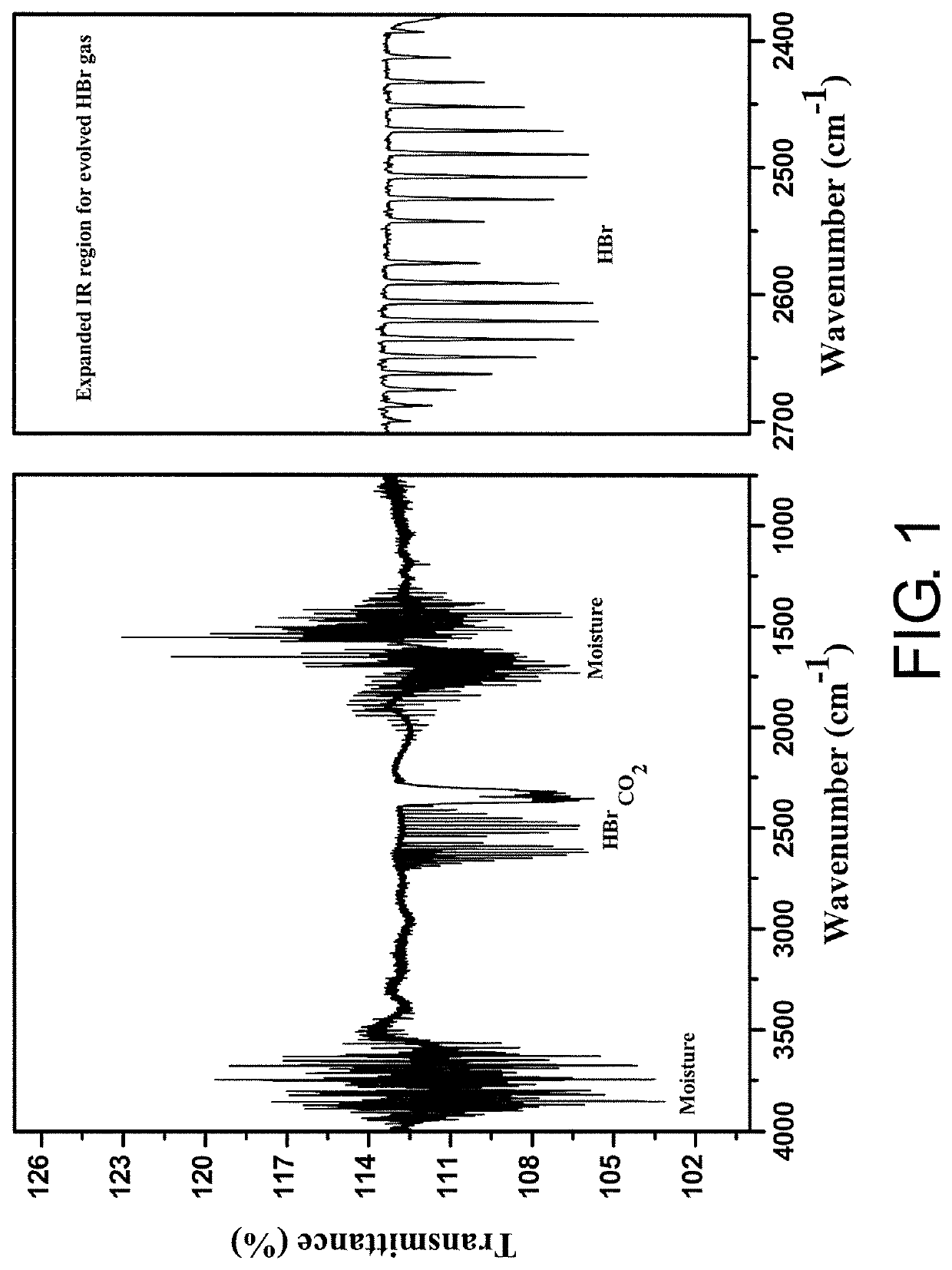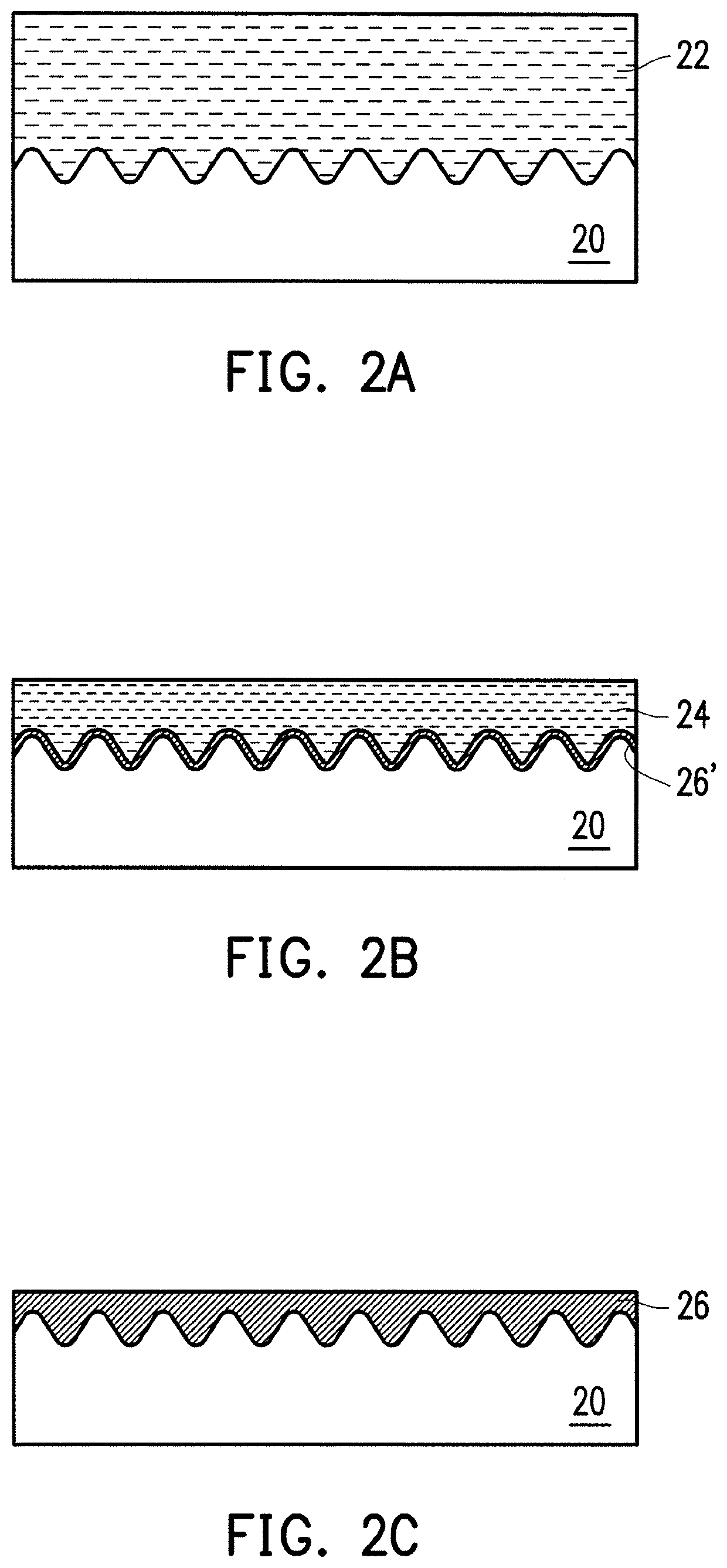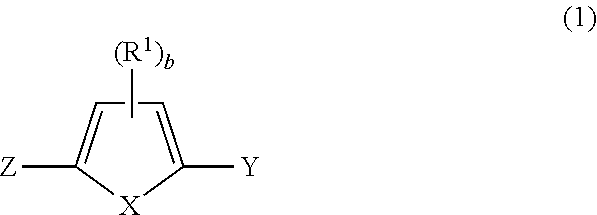Composition and method for forming electroactive polymer solution or coating comprising conjugated heteroaromatic polymer, electroactive polymer solution, objects comprising the electroactive coating, and solid electrolytic capacitor and method for fabricating the same
a polymer and heteroaromatic technology, applied in the field of conjugated heteroaromatic polymers, can solve the problems of large limitations on the allowable functional groups of thiophene monomers, long term stability, and detriment to optimal performance, and achieve the effect of low cost, effective and environmentally friendly methods
- Summary
- Abstract
- Description
- Claims
- Application Information
AI Technical Summary
Benefits of technology
Problems solved by technology
Method used
Image
Examples
examples
[0150]The following examples are intended to further explain this invention, but are not intended to limit the scope of this invention.
examples 1-4
unctional Components of Polymerization Retardant and Polymer Binder
[0151]An anode aluminum foil having an Al2O3 dielectric layer formed at an electrochemical forming voltage of 9 V and a cathode aluminum foil of high surface area prepared by an electrochemical erosion were wounded together with an interposed separator to form a solid electrolytic capacitor element, as conventionally designed for a capacitor with a rated voltage of 6.3 V and a rated capacitance of 470 μF. After the electrochemical reforming treatment in an organic acid solution to repair the damaged dielectric layer, the capacitor element was dipped for 10 minutes in a composition solution containing 2-bromo-3,4-ethylenedioxythiophene (BEDOT) as the monomer (1 M) and toluenesulfonic acid (TsOH) as the acid catalyst (0.05 equiv) together with or without the addition of optional functional component(s), such as polymerization retardant (e.g., ethyl acetate; EA; 1 equiv) and / or polymer binder (e.g., polystyrene; PS; 0.1...
examples 5-8
ility Test at 240° C.
[0155]The solid capacitors prepared in Examples 1-4 were subjected to a thermal heating experiment in Example 5-8, respectively, at 240° C. for 38 minutes. After cooling down to room temperatures, the properties of the resultant capacitors were measured and listed, respectively, in Example 5-8 (Table 2).
PUM
| Property | Measurement | Unit |
|---|---|---|
| temperature | aaaaa | aaaaa |
| temperature | aaaaa | aaaaa |
| temperature | aaaaa | aaaaa |
Abstract
Description
Claims
Application Information
 Login to View More
Login to View More - R&D
- Intellectual Property
- Life Sciences
- Materials
- Tech Scout
- Unparalleled Data Quality
- Higher Quality Content
- 60% Fewer Hallucinations
Browse by: Latest US Patents, China's latest patents, Technical Efficacy Thesaurus, Application Domain, Technology Topic, Popular Technical Reports.
© 2025 PatSnap. All rights reserved.Legal|Privacy policy|Modern Slavery Act Transparency Statement|Sitemap|About US| Contact US: help@patsnap.com



